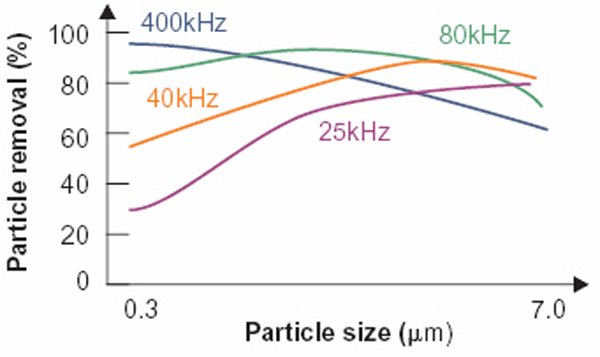While high cavitation frequencies produce smaller vacuums and as such can penetrate where larger may not, the implosions from higher frequencies have less force and will be less effective in dislodging larger particles/fragments.
For this reason we are using a lot of power (300W) for a really small ultrasonic tank (~1L).
Thanks for your responses, degritter_taniel - it's always good to hear from the manufacturer. I have a few follow-up questions, if you please, to learn from your expertise drawn from the development of your forthcoming machine. Thank you very much in advance for any thoughts you may share.
- Does the amount of applied power change vacuum 'bubble' size?
- Does the amount of applied power change water/soultion temperature?
- Is it possible to correlate power (wattage) to cleaning effectiveness or implosion force? Could such a correlation hold across any commonly used transducer frequencies?
- I read some Degritter literature some time back (when spirit was first telling his beta experience) and it said something like: 'Our use of 120kHz is gentler and safer than other commonly found lower frequencies in other machines.' (Not a quote, but that was my takeaway.) I don't know if your literature still makes a claim like that. Does using 300W in a smal tank mitigate the 'gentler, safer' claim or change it in any way?
My questions are not meant to challenge statements from Degritter, and acknowledge the need of manufacturers to differentiate their products. I'm more interested in facts and concepts about ultrasonic cleaning and its use for cleaning records - an area which seems still developing in knowledge.
Claims/statements about transducer frequency and particle size removal are pretty common in the ultrasonic cleaning industry, though fewer in relation to cleaning vinyl records specifically. Can you share what Degritter studies have found?
Here is a graph that addresses frequency vs particle size. (Referenced in footnotes of my third DIY
article.) It pertains tor ultrasonic cleaning of perpendicular magnetic tape (PMR), not vinyl. Have you found similar relations between particle removal and frequency for vinyl records?



